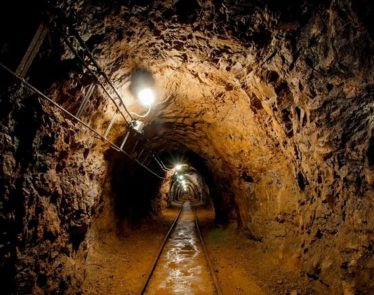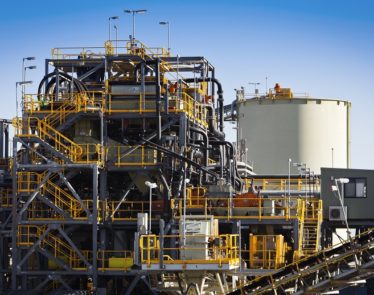
Lithium mining companies voiced their concerns last week after attendance at the Fastmarkets Lithium Supply and Markets Conference in Santiago, Chile revealed very little interest in the lithium market. It seems that lithium stocks are losing capital as investors and fund managers shift their focus to cannabis.
The half-empty conference was a stark contrast to last year’s event, when lithium prices reached historic highs, which at the time had raised concerns over the need for more capital to meet the growing demand for the metal.
Although the market is still oversupplied, unwavering demand for lithium-ion batteries is expected to tighten the gap. In fact, the battery storage market is expected to be worth $13 billion by 2023, with lithium-ion batteries leading the way. What’s more, the number of electric vehicles (EV) sales could reach up to 4.5 million units by 2020 and 10 million by 2025.
Still, despite this growing need for the white metal, investors seem to be fairly vacant from the lithium space.
Lithium Stocks Need Capital to Meet Demand
According to Galaxy Resources (OTCPK:GALXF) CEO Anthony Tse, roughly $9 billion USD has to be invested into lithium stocks in order to add the 60,000 tons of new capacity needed to meet the demand in coming years.
“Unless we start seeing meaningful slots of capital and checks being written for the sector, I see it very hard how you can get the amount of supply needed to meet demand,” Tse said during his presentation at the event. “You can build all the EV factories that you want, but if you don’t have any of the raw material, you can’t feed that chain.”
>> MLNT Stock Moves Up Big On FDA Boost: Baxdela sNDA
Nemaska Lithium Inc. (TSX:NMX) (OTCQX:NMKEF) is one lithium stock that was able to raise $1.1 billion last year for its Quebec-based mining project. However, Nemaska’s stock suffered when it announced that $375 million more was needed to complete construction.
Another concern in the lithium space is the fact there is currently no traded lithium price. Luckily, the London Metal Exchange (LME) and Fastmarkets, a leading source of pricing information for the global commodity markets, are partnering to develop a lithium price benchmark.
“In recent years there has been unprecedented price volatility in the lithium market, driven particularly by explosive electric vehicle (EV) battery demand,” said Robin Martin, LME Head of Market Development. “The LME has been approached by a number of industry players, including producers, end users, and several leading automotive firms, to develop effective lithium price-risk management tools.”
Lithium Stocks Positioned to Succeed
Despite the lack of investor interest, there are a number of lithium stocks that are poised to meet the growing demand.
At present, a majority of the world’s lithium is produced by the “Big 3″—Sociedad Quimica y Minera de Chile (NYSE:SQM), FMC (NYSE:FMC), and Albemarle (NYSE:ALB). However, Albemarle’s Silver Peak Mine in Nevada has failed to increase production and is reporting a decrease in lithium grades.
In Chile, which hosts the world’s largest lithium reserves, lithium outputs are dwindling as SQM and Albemarle fail to boost production. At the same time, environmental concerns and regulatory hurdles are preventing new projects in the lithium-rich South American region, offering an opportunity to lithium stocks operating elsewhere.
One of these is Lithium Americas (TSX:LAC), which is developing Caucharí-Olaroz in Argentina with Chinese top lithium producer Ganfeng Lithium Co. (OTCPK:GNENF). The company also owns 100% of the Thacker Pass lithium project in Nevada.
>> MoneyGram Stock Rockets on Ripple’s Investment News
Another company operating a mine in Argentina is Neo Lithium (TSXV:NLC), which is advancing its Tres Quebradas project in Catamarca, a high-grade lithium brine lake and salar complex. Vancouver-based Millennial Lithium (TSXV:ML) (OTCQX:MLNLF) is also working to develop two lithium projects in Argentina.
There are also a number of lithium stocks focused on developing mines in the United States. US lithium resources, which include reserves as well as lithium that cannot yet be economically mined, are estimated to be approximately 36 million tonnes of lithium carbonate LCE.
This week, Standard Lithium (TSXV:SLL) (OTCQX:STLHF) revealed positive Preliminary Economic Assessment (PEA) results at its flagship project in Arkansas.
In Nevada, Cypress Development Corp. (TSXV:CYP) (OTCQB:CYDVF) reported a Total Indicated Mineral Resource of 697 million tonnes at its Clayton Valley project.
Pure Energy Minerals Limited (TSXV:PE) (OTCQB:PEMIF) has a project in Nevada as well, with a Total Indicated Mineral Resource of 3.835 million tonnes of lithium carbonate equivalent (LCE). Although the mine is not yet producing, Pure Energy Minerals has already signed a lithium supply deal with Tesla Motors Inc. (NASDAQ:TSLA).
In Canada, Power Metals Corp. (TSXV:PWM) (OTCPK:PWRMF) offers the market a lot of promise with its hard-rock lithium mining projects, which have the ability to extract lithium at a faster pace and lower cost than brine-based mining competitors.
It will be interesting to see which lithium stocks manage to secure the necessary funding needed to bring their projects to production. Investors who are interested in the lithium space will likely be keeping an eye out on which projects have the most potential of reaching that stage.
Featured Image: Depositphotos © billiondigital












